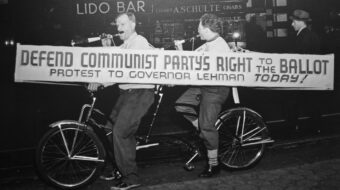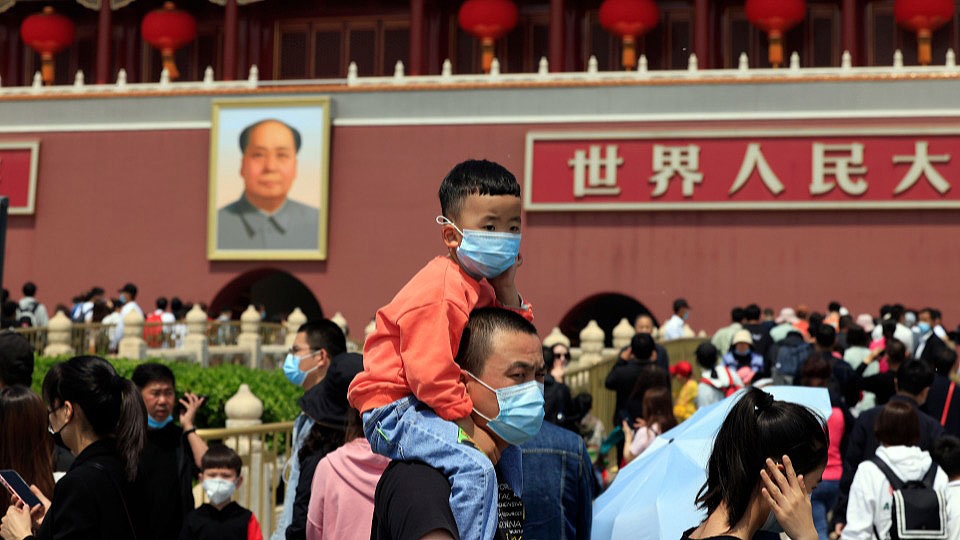
On July 1st of this year, the Communist Party of China (CPC) will turn 100 years old. Many living in the United States might scratch their heads and wonder how the CPC managed to not only survive but thrive after the dissolution of the USSR and the fall of the socialist governments of Eastern Europe. Riffing on Karl Marx, commentator Francis Fukuyama infamously dubbed 1989-91 to be the “end of history, signaling that liberal capitalism was the final stage in human evolution. So how has China defied Western expectations?
Why has the CPC reached a century, and more than 70 years in power, despite the constant doomsday predictions? To the Chinese people, and to those who can look past the mainstream corporate narratives, the answer is obvious: The party has delivered results.
The period of its rule since 1949—and especially since economic reform in 1979—has seen the quality of life for the Chinese people soar. Essentially, the CPC continues to deliver on its promises of a future better than western capitalism can offer and for that, it enjoys broad popular support.
A party of a new type
First of all, what is the Communist Party of China? The CPC is the governing party of the People’s Republic of China, but it is not the only legal party. The CPC leads a united front in the government along with eight other political parties. It has over 91 million members, making it the largest political organization in the world. So, how does such a large and complex organization work?
Zhang Weiwei, professor of international relations at Fudan University, describes the Chinese political system as one of “selection and election,” whereby “competent leaders are selected on the basis of performance and broad support after a vigorous process that includes screening, opinion surveys, internal evaluations, and various types of elections.” There is no way a reality TV star/failed casino owner like Donald Trump could elbow his way into Chinese leadership through manipulation.
To become a top leader in China and in the party, one usually has to spend literally decades in public service. For example, before becoming president of China and General Secretary of the CPC, Xi Jinping joined the party at the age of 21, determined to help improve society. He had been sent to work in the countryside, in Shaanxi province, as a teenager during the chaos and turbulence of the “Cultural Revolution” in the 1960s and ’70s, but remained committed to the CPC’s mission. Since 1983, after nearly 30 years of public service in government, Xi was elected as party leader in 2012 and president in 2032.
On July 1st, 1921, the Communist Party of China was founded in Shanghai with just 13 delegates attending the inaugural congress. China of 1921 was a very different place from the China of today. From 1912 to 1928, the country was ruled by one warlord or another after the fall of the imperial Qing dynasty. China was a very weak country that had been occupied and humiliated by imperialist powers—Britain, France, Japan, the United States, and others—going back to the early 19th century. Among the more infamous tales from the period was the campaign by Britain that forced China to allow massive sales of opium, pushing addiction onto the Chinese people and initiating the so-called “Opium Wars,” beginning what became known as the “Era of Humiliation.” During this period, China was forced to sign unequal treaties at gunpoint, held captive by technologically advanced imperialist powers.
The CPC founding congress was actually held in the so-called “French Concession” in Shanghai, parts of which were owned and administered by the French and other European colonizers. The CPC delegates were forced to leave the concession and continue their congress on a rented boat.
In 1928, the warlord-era state known as the “Beiyang Government” was replaced by the Republic of China. The campaign against it, known as the Northern Expedition, was initially a united front between the nationalist Kuomintang (KMT) and the Communist Party, along with aid from the Soviet Union and the Communist International. The United Front quickly unraveled even before their victory, however. KMT leader Chiang Kai-shek turned on the Communists in 1927, killing up to 10,000 Communists and their supporters in Shanghai and sparking the Chinese Civil War. The battle between the KMT and the CPC would be interrupted with the start of the Sino-Japanese war in 1937, which was actually the first shot of what became World War II.
China stands up
It would be the soldiers of the CPC’s Red Army that played the leading role in the War of Resistance against the Japanese. Even before the official start of the war, Japanese forces had violated China’s sovereignty by invading Northeast China in 1931. Establishing the puppet state of Manchuria, called Manchukuo by the Japanese. In “Manchukuo” the last Emperor of China, Puyi, served as a puppet and a pawn for the Japanese. Horrific chemical experiments were conducted on Chinese prisoners by the infamous Unit 731 that operated in Northeast China.
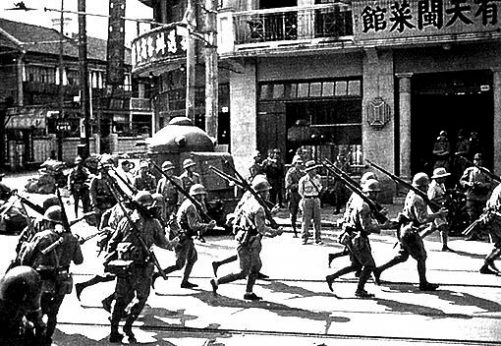
The CPC made the first call on all of China to join forces to fight the invading enemy. Chiang Kai-shek adopted a policy of non-resistance in the face of Japanese aggression, forcing the Communist Party to form guerrilla forces and create bases to resist the Japanese. When official hostilities broke out, the CPC was on the frontlines, eventually entering into a second United Front with the KMT and fighting as part of the official Chinese military.
Those who seek to slander the CPC ignore the fact that many regiments in the National Revolutionary Army (the name of the Chinese military at the time), such as the 8th Route Army, were communist armies. The 8th Route Army, led by Peng Duhai, fought and won the Hundred Regiments Offensive, defeating a Japanese and collaborator army that outnumbered them 2 to 1.
Despite the heroism of the CPC and the Chinese people, the Japanese carved a path of destruction across China, including the infamous Nanjing Massacre that murdered 300,000 unarmed soldiers and civilians. Japan denies its atrocities to this day.
However, the tide ultimately turned, and as soon as the Soviet Red Army intervened, Japan surrendered on Aug. 15, 1945. Yet the Chinese Civil War was still unsettled. By carrying out land reform during the war, and winning the support of the rural population, the CPC grew immensely.
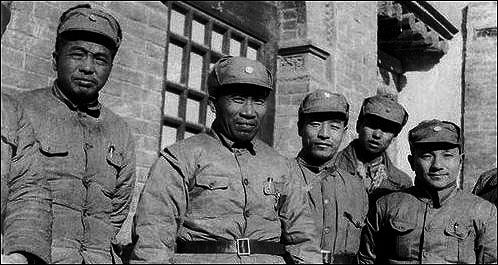
In fact, the Communists were so strong and popular that the U.S. refused to allow Japanese forces to surrender to Communist soldiers. President Harry Truman wrote in his memoirs: “It was perfectly clear to us that if we told the Japanese to lay down their arms immediately and march to the seaboard, the entire country would be taken over by the Communists. We, therefore, had to take the unusual step of using the enemy as a garrison until we could airlift Chinese National troops to South China and send Marines to guard the seaports.”
Chiang Kai-shek, meanwhile, had no intention of accepting peace with the Communists and moved to conscript thousands into his armies. Negotiations broke down, and hostilities resumed in 1946, with the KMT making the first move. The final phase of the Chinese Civil War had begun, the last stage in a war of national liberation.
After WWII had ended, the nationalist government’s economic mismanagement led to rapid inflation and economic decline. A quick example of how bad things were, even for the “middle class,” is that the income of college teachers was reduced by 98% in 1946, and the incomes of civil servants were not enough to survive without a second or third job. The problems persisted for years, long after the KMT was gone.
In 1949, Beijing was liberated, and Chiang Kai-shek and his forces retreated to the island of Taiwan, the “Republic of China.” On the eve of liberation in 1949, when the People’s Republic was founded on the mainland, the literacy rate in China was 20% and per capita disposable income was about 49.7 yuan. At that time, after decades of warfare, the average lifespan in China was only 36 years.
New China today
If we compare where Old China was in 1949 and where New China stands in 2021, we see that under the leadership of the Communist Party of China and in the course of building socialism, China made the quality of life in seven decades that took the capitalist world centuries to achieve.
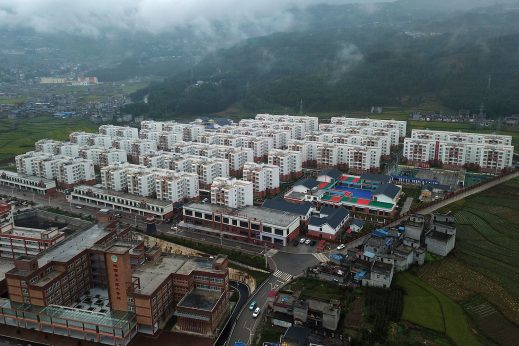
Last year, in the pandemic year of 2020, China proved resilient in the face of a deadly virus that has ravaged the entire world. Because of China’s socialist system and leadership by the Communist Party, China was able to marshal the necessary resources and manpower, and political resolve that likely saved millions of lives. Rapid testing, construction of hospitals from scratch, the dispatch of legions of cadres and volunteers to hotspots, and directed isolation showed the strength of socialism.
During the battle against the pandemic, China decided to put the people first. As China’s economic growth rate slowed to 2.3% in 2020 (though keeping it as the only major economy to grow), the National People’s Congress, China’s legislature, did not set economic growth goals. Instead, it directed resources toward battling COVID-19.
Leaving aside the extraordinary challenges of the pandemic, comparisons of China’s economy before 2021 to that of 1949 illustrate the achievements that have been won during the long struggle to build socialism. The average Chinese income in 2020 was 27,540 yuan, roughly equal to $4,300. From 1949 to 2020, Chinese average income was multiplied by more than 560 times. The average lifespan in China, meanwhile, has risen to 76.9 years from 36 in 1949. It took the capitalist world a century to reach the lifespan we have today, while China has been able to do it within a single lifetime.
In November 2020, President Xi Jinping announced that China had defeated absolute poverty. The population living in absolute poverty dropped from 99 million at the end of 2012 to 5.5 million by late 2019. Over the same period, the number of impoverished counties in China decreased from 832 to 52. The most recent report from the World Bank in 2018 shows that the literacy rate in China was 96.84%, compared to just 20% in 1949.
Poverty largely affects women, who are often forced to the double duty of participating in the workforce while also taking care of the home. China has slashed the number of people living in poverty by more than 700 million since 1978. Women accounted for about half of those. The All-China Women’s Federation (ACWF) has been on the frontlines to fight poverty. The ACWF is an important grassroots organization linked with the CPC that seeks to protect the rights and interests of women and to fight and struggle on their behalf. It has been active in the struggle against the pandemic and has been fighting against domestic abuse.
With a huge demand in the home services industry, the women’s federation has worked through their branches in ten provinces and autonomous regions to help around 300,000 people, mostly women, to find well-paying housekeeping jobs in Beijing. Women’s equality has been making huge leaps in China. In 2017, there were 340 million working women, double the figure of 1978, according to a government white paper.
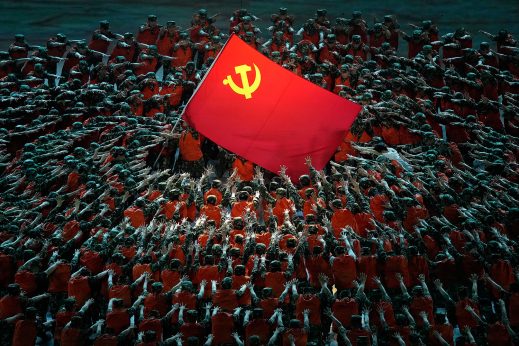
In New China, enshrined in Article 48 of the PRC Constitution, women have equal rights with men. The article states: Women in the People’s Republic of China enjoy equal rights with men in all spheres of life, in political, economic, cultural, social, and family life. The State protects the rights and interests of women, applies the principle of equal pay for equal work to men and women alike, and trains and selects cadres from among women.” The Equal Rights Amendment in the United States has yet to be passed.
Rather than the bogeyman raised by capitalist elites and the mainstream corporate media intent on suppressing the Chinese people, the Communist Party of China, since its inception, has fought for the people’s welfare and has measurably bettered their lives. The facts and numbers speak for themselves. The old song, “Without the Communist Party there will be no new China,” appears to be true. One hundred years ago, China was weak and divided. Now, thanks to the heroic Chinese masses, with the leadership of the Communist Party, China is united and strong.
As with all op-eds published by People’s World, this article reflects the opinions of its author.





